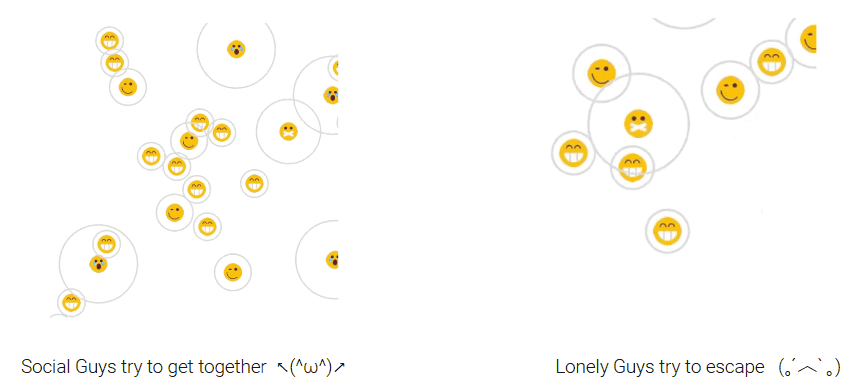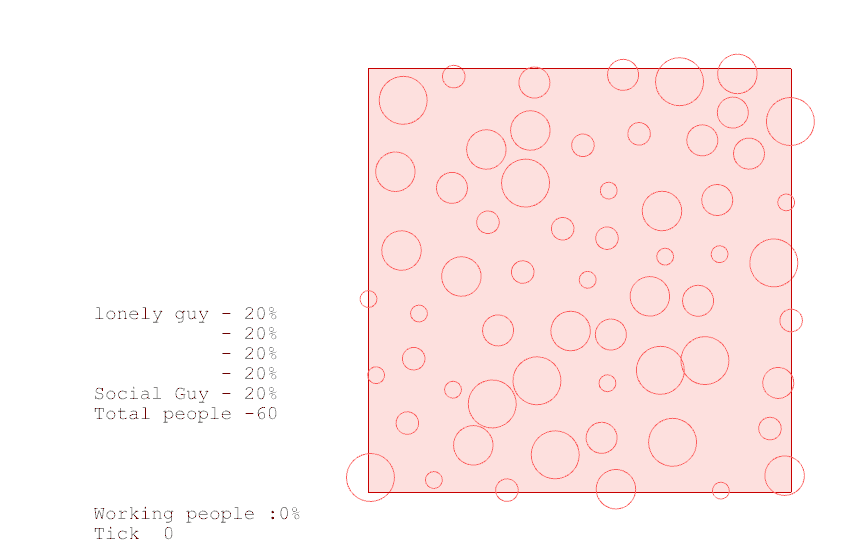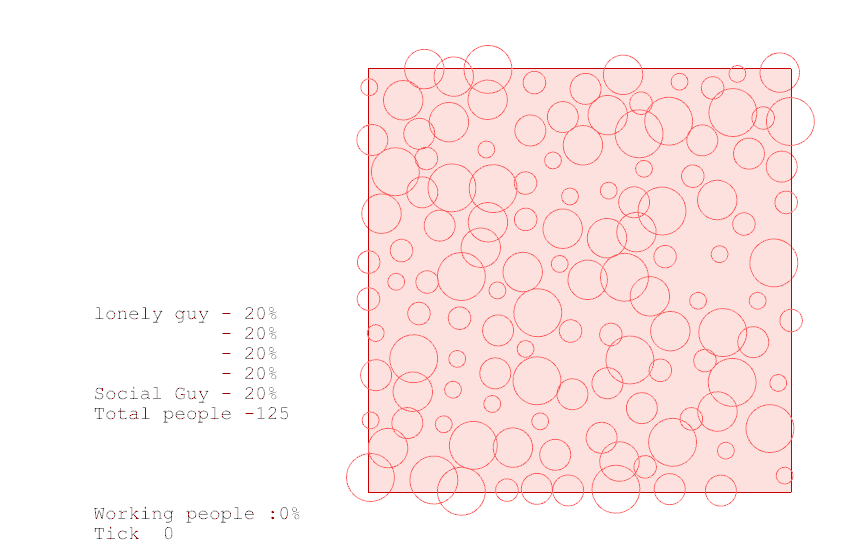Office Fighting! (Shuangying Xu, Yuxin Qiu)
by Yuxin Qiu in Circuits > Computers
226 Views, 0 Favorites, 0 Comments
Office Fighting! (Shuangying Xu, Yuxin Qiu)

Agent based modeling based on boid agent system
Inspiration
Activity-based workplaces (ABW) have been proved to be able to optimize working experience as well as efficiency. Recent works have shown that physical office space will impact work relationships through the relationship-building and -straining mechanisms of communication elements, territoriality, and self-regulatory resources, which can be generally concluded in privacy and communication.
Aim

The aim of this project is to generate a workspace, where everyone with different requirements finds his satisfied position to achieve higher working efficiency.
Methods

In order to simulate people with different requirements, we firstly defined five levels of social levels. Based on these levels, we build the agent-based system with a boid agent system in a mesh-based environment, in which behaviors of agents will be evaluated by simulating time. Meanwhile, an abstract workspace will also be generated as a design application.
Move Principle

Social guy and lonely guy
Agent System With Behaviors


The boid agent system works in three main steps. Firstly, we figure out in which social level the agent will be in. Then according to the level, an influence area will be defined in order to select the neighboring agents that will affect the agent. During the evaluation process afterwards, the sensibility of different levels are also taken into consideration, which will eventually lead to different motions of agents, including 1) staying when the requirement is fulfilled; 2) seeking or avoiding when the requirement is partly fulfilled; 3) wandering without purpose when the requirement is far from fulfilled.
Result for People Location

The system will run until everyone finds their satisfied place.
Environment System




As a result of the agent simulation, a mesh-based environment system is introduced for visualizations. The principle is that the movement of agents causes the mesh environment to be colored, while the staying of agents leads to fading of the painted color.
Results


The test of the model is based on two different aspects: variable density and diversity. The result shows that extremely low density of space use will cause declining working efficiency because it will be difficult for people to fulfill the communication requirements, while higher density doesn’t necessarily mean a less workspace quality, when the proportion of people with different requirements properly set is. Besides, too many people with similar requirements can also lead to a conflict in accessing the space resources, which will eventually lead to a lower working efficiency.
Current Results
- density and diversity.
- extremely low density of space use will cause declining working efficiency because it will be difficult for people to fulfill the communication requirements
- higher density doesn’t necessarily mean a less workspace quality, when the proportion of people with different requirements properly set is.
- too many people with similar requirements can also lead to a conflict in accessing the space resources, which will eventually lead to a lower working efficiency.
More Possibilities
- Dynamic solution rather than resulting output
- More environmental inputs: obstacles, space zones, …
- Not human, but others? Robots finding their tasks and working areas…